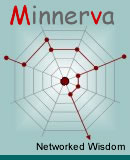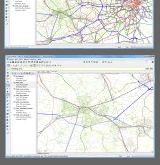

|
Minnerva played a keyg role in the specification and development of a replacement transport model that Reading Borough Council commissioned from its term consultant Peter Brett Associates This model had to meet the requirements of Reading’s TIF (Transport Innovation Fund) transport scheme bid to the Department for Transport (DfT), as well as the needs of its own Local Transport Plan concerns. The TIF component and the associated modelling specification in the DfT’s WebTAG guidance implied that the replacement model was a fully-featured multi-modal transport model of Reading and the surrounding area, though the model actually covered the UK mainland A major part of the modelling process was concerned with the development of the base year matrices for which Minnerva was particularly involved in processing and integrating data from varied sources including traveller surveys, Census data, and synthetic models that Minnerva developed and calibrated in two distinct ways to exploit national and local sources of information. The procedure was also directed at ensuring consistency, as far as possible, between the PA trip matrices used for demand modelling and the related OD matrices used for network assignment modelling The modelling included significant levels of segmentation by trip purpose, car availability, and income group, with options provided additionally to consider availability of private non-residential parking places for drivers The choice modelling included choices about travel modes, trip distribution, and time of day of travel, as well as subsidiary choices on mixed-mode travel (car and public transport combined) and on parking locations. The entire variable demand modelling system was implemented in OmniTRANS, although trip end modelling took advantage of the DfT’s CTRIPEND trip end component. This is derived from the DfT National Model, but provided useful capabilities for integrating local details on population and employment. Contact: Miles
Logie |

|
|
